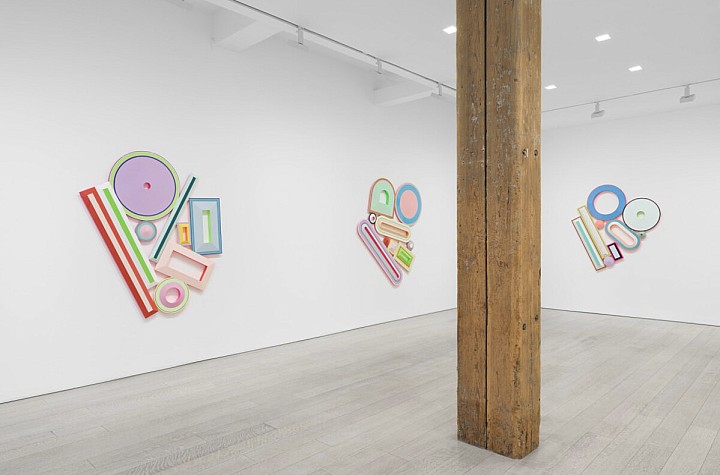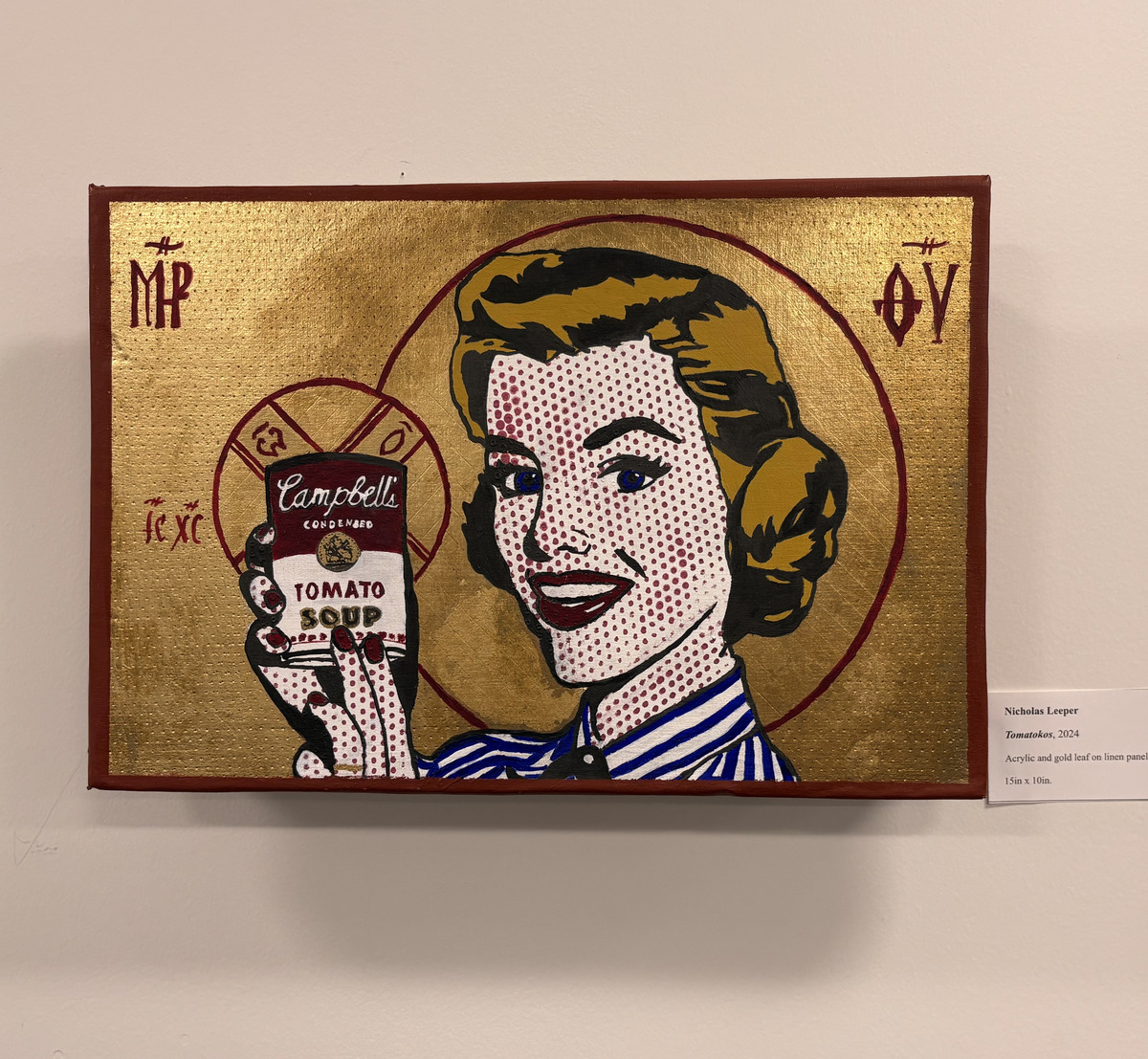 Nicholas Leeper, Tomatokos, 2024, acrylic and gold leaf on linen panel.
Nicholas Leeper, Tomatokos, 2024, acrylic and gold leaf on linen panel.
By LIAM OTERO June 28, 2025
Creators, Educators Art Show at BASIS Independent, Upper West Side (June 6 – June 8, 2025)
“A gallery-style exhibition on the Upper West Side?” was a question I was asked by a few different friends and colleagues when I recounted my recent art excursions. The Creators, Educators Art Show was precisely the type of exhibition that needs greater representation in the Art World seeing that it focused on the independent creative work undertaken by New York City art teachers, instructors, and educators beyond the classroom. Curated by Carmen Lucia Recio, a fellow artist and art educator, she and 16 other artists from all over the city gathered to exhibit their works at the private elementary school, BASIS Independent, all the way on the Upper West Side. The curatorial direction and range of works included in this show were phenomenal and was on par with that of a group exhibition held at a gallery down in Chelsea or Tribeca. Though the Upper West Side is not typically associated with a gallery scene, the residential hustle & bustle of the W. 97th & Columbus Avenue neighborhood and surrounding areas inevitably led to a strong visitor presence during the three days the show was open.
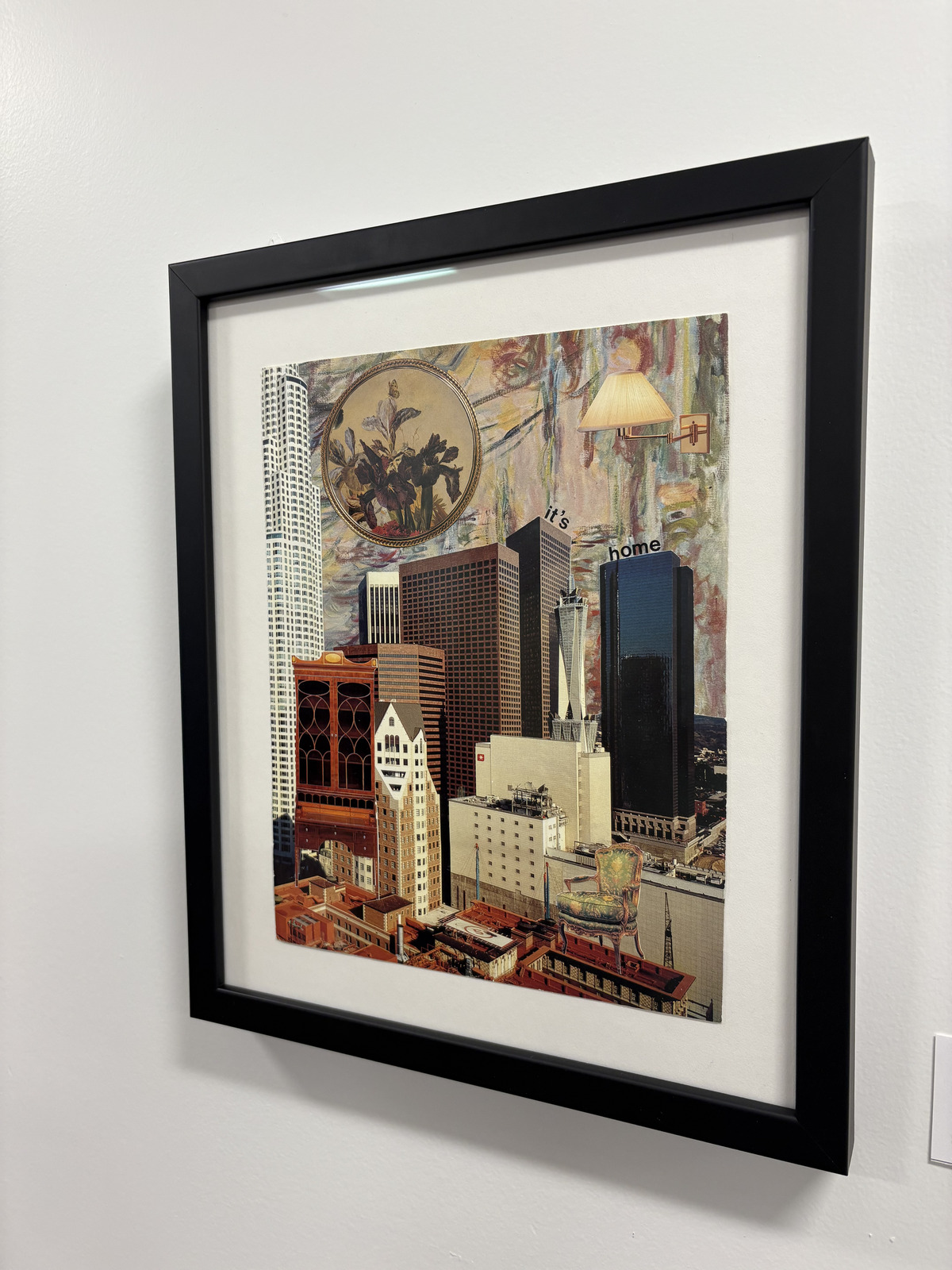 Noelle Salaun, Homebound, 2023, paper on paper.
Noelle Salaun, Homebound, 2023, paper on paper.
Turning to the artists now, I will first state that I felt a yearning to be a kid again as it must truly be a privilege to have one of these artists as an instructor. To highlight a few examples: Noelle Salaun’s collages were illusory configurations featuring a brilliant mixing of disparate objects that fit together like the tesserae of a mosaic. This makes for a nice segue into Nicholas Leeper’s acrylic and gold leaf paintings that are a heavenly fusion of Byzantine icon painting and Pop Art semiotics. Avani Patel’s paintings make you want to jump and swoon with the wonderfully bounteous display of abstracted blossoming flowers that seem to literally go with an invisible flow. Lynne Marie Rosenberg’s humorous illustrations of children’s story ideas – such as a horse running on a treadmill atop a car labeled “Horse Power” – is the reincarnation of the 1950s cartoon short, Symphony in Slang, with a dash of Kids Say the Darndest Things. Chris Floyd, who merges his background of Science and Art, produced an entire body of surrealistic illustrated poems that are a direct homage to children’s writer & cartoonist Shel Silverstein. Recio’s own contributions to the exhibition were delightfully paradisiacal flower paintings whose contours are imbibed by swarms of brilliant colors. Emily Linares, too, brought in a natural element to the exhibition with Fauvist-meets-Orphist painterly seas of floral motifs.
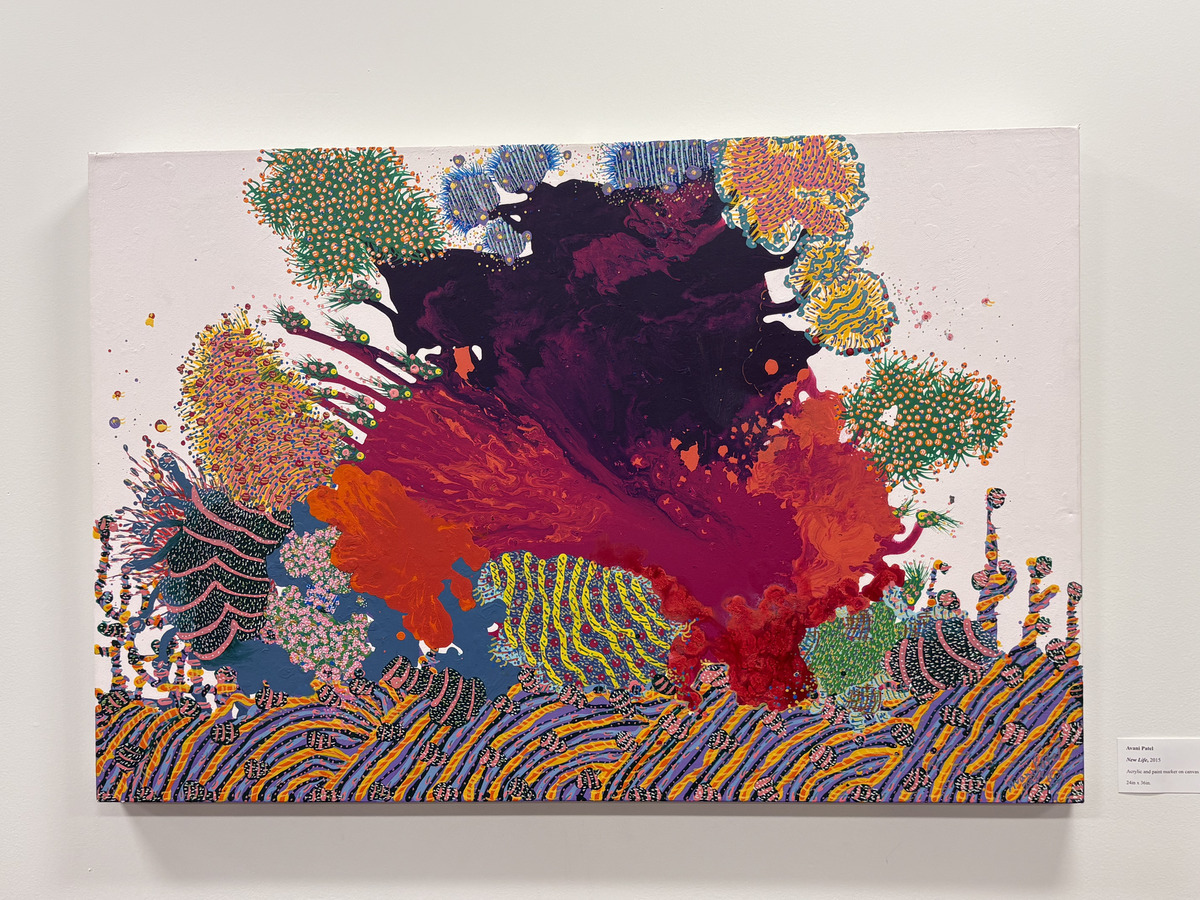 Avani Patel, New Life, 2015, acrylic and paint marker on canvas.
Avani Patel, New Life, 2015, acrylic and paint marker on canvas.
I should also add that the artists’ CVs combined reveal a remarkable representation in the New York art scene: The New York Studio School, Mriya Gallery, Society of Illustrators, Queens Museum, Art Gotham, etc.
Samantha Thomas: Love in a Mist at Anat Egbi Gallery, Tribeca (April 18 – June 14, 2025)
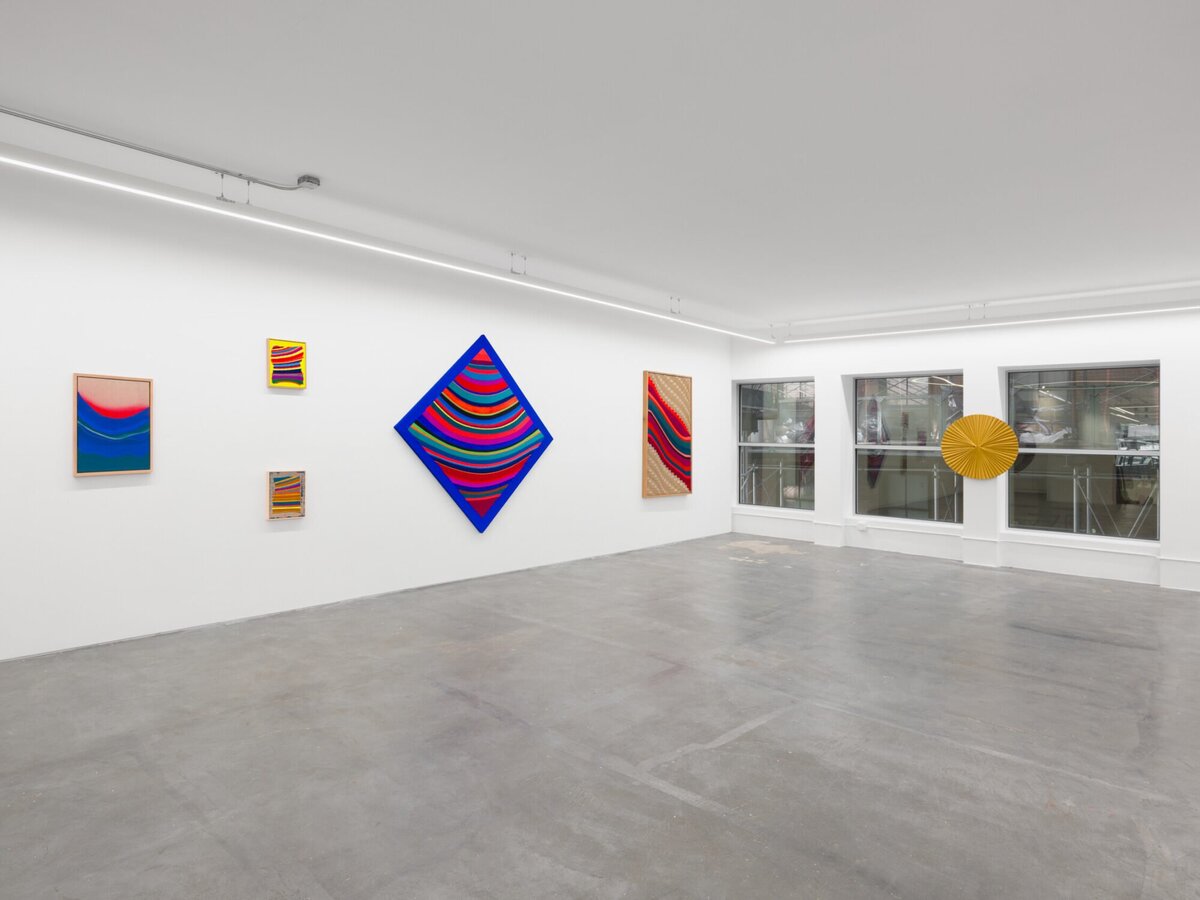 Installation view of Samantha Thomas: Love in a Mist at Anat Egbi Gallery, Tribeca. Courtesy of the artist and Anat Ebgi, Los Angeles / New York.
Installation view of Samantha Thomas: Love in a Mist at Anat Egbi Gallery, Tribeca. Courtesy of the artist and Anat Ebgi, Los Angeles / New York.
I was pleasantly greeted by a vivacious display of rippling, curving, and undulating forms that lined the walls of the naturally-lit mezzanine level of Anat Egbi Gallery. Samantha Thomas (American, b. 1980), is a Los Angeles-based artist and this exhibition is her first New York solo show in over a decade, which heralds this as her triumphant return to the contemporary East Coast scene. Viewing any work by Thomas is to bear witness to an artist who possesses a masterful understanding of light, color, texture, and composition. Essentially, her style is the embodiment of the very best of Abstract Expressionism, Color Field, and the Pattern & Decoration movement.
Though she is an abstract artist, it would be too reductive to describe her work as “non-representational” as there are clear referents embedded within these lush works, particularly landscapes and planetary shapes. Rare (Goldstar) (2025) is a sun-like golden acrylic on canvas painting hung between two of the Cortlandt Alley-facing windows, which just so happened to be glowing on the sunny day when I visited. A remarkably unusual curatorial move as the natural light appeared to “activate” the celestial artwork to produce a luminous sheen that can only dazzle one’s view. The acrylic on linen Love’s A Stranger Till I See You Again (2023 – 2024) resembles the swaying of water before a reddened sunset that gradually peters out to the unpainted topmost section of the linen surface. A thin strip of green and possible traces of tan in the middle of the blue waves could be suggestive of a small island in an ocean. Island or no island, there is a soothing quality to how Thomas lets the paint speak for itself.
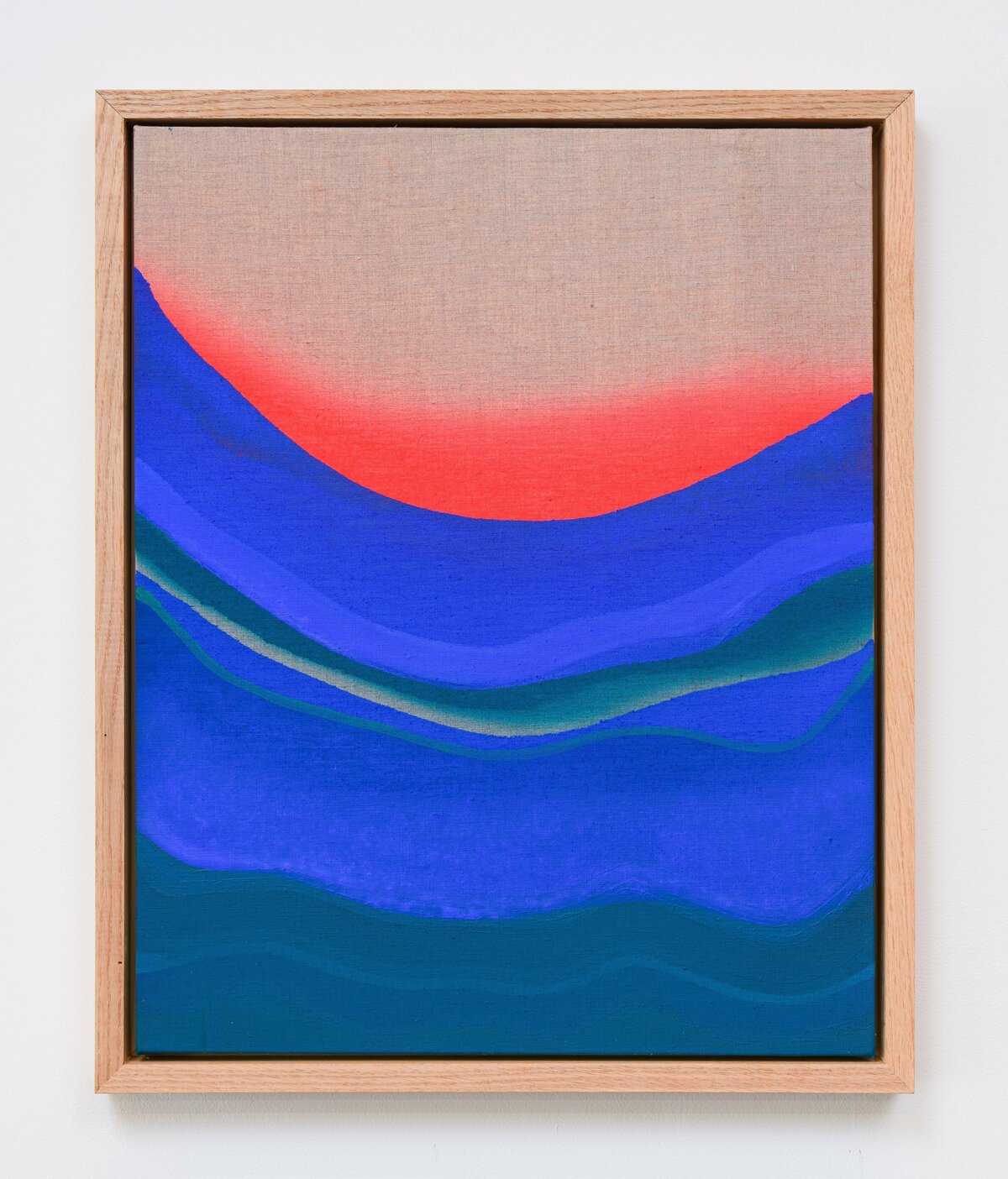 Samantha Thomas (American, b. 1980), Love’s A Stranger Till I See You Again, 2023 – 2024, acrylic on linen, artist frame. Courtesy of the artist and Anat Ebgi, Los Angeles / New York.
Samantha Thomas (American, b. 1980), Love’s A Stranger Till I See You Again, 2023 – 2024, acrylic on linen, artist frame. Courtesy of the artist and Anat Ebgi, Los Angeles / New York.
The curation of each work in an asymmetrical style with the pieces hung at varying heights and distances in relation to one other perfectly complements the enthusiastic zest that blossoms within Thomas’s art. Much like nature itself, Thomas’s art was given its space to “breathe” and prosper like flowers on fertile soil.
Revisiting her work, it dawns on me that only a California artist like Thomas is able to seamlessly merge light and color to convey the full spectrum of emotions. Though for me, I cannot help but discern only uplifting feelings in her work which leaves me feeling rejuvenated and with a renewed joie de vivre spirit.
Dena Novak: Domestic Saturation at SHRINE, Tribeca (May 9 – June 21, 2025)
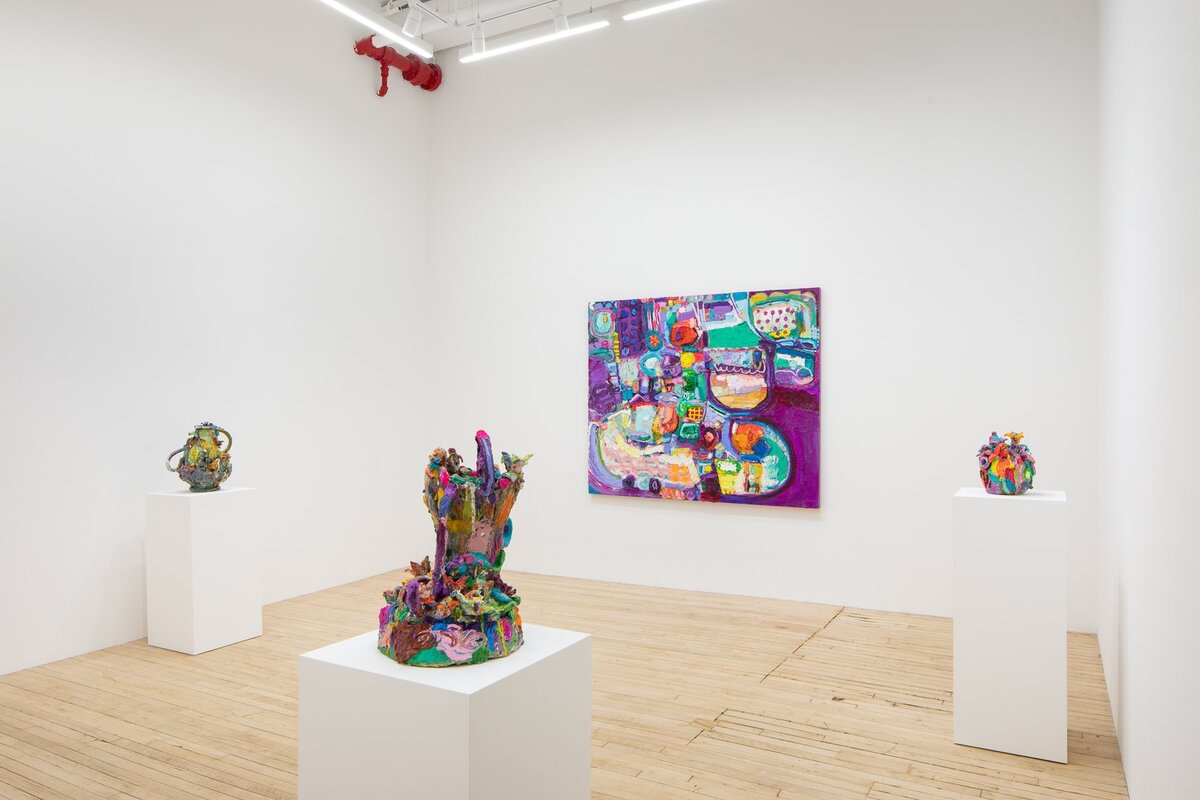 Installation view of Dena Novak: Domestic Saturation at SHRINE, Tribeca
Installation view of Dena Novak: Domestic Saturation at SHRINE, Tribeca
Dena Novak’s (American, b. 1968) paintings and ceramics are an impasto-crazy display of thickly applied paint strokes and colorful glazes that bestow a chaotically beautiful life-force to them. Novak is the ultimate counterpoint to art critic Clement Greenberg’s rigid preference for flatness in art and her work would make Van Gogh look strictly two-dimensional. Stand where you may, there is no denying that protrusion is a defining characteristic of Novak’s works as they each brim with a feverish vitality that seems ready to leap off the surface and into our space. The oil on ceramic Tea Pot (2024) is an overflowing wellspring of flowers and a florid stream of colors that overwhelm the teapot’s rim, engulf its base, and wrap around the handle. As for painting, Hybrid Still Life in Dreams (2024) is a deliciously exuberant play on perspective that feels both recognizable and indecipherable, much like when we attempt to recall the events of a dream, as seen in the deconstructed floral still life, smears of painterly dividers, quivering tumults of patterns, and a slight poking in of sky.
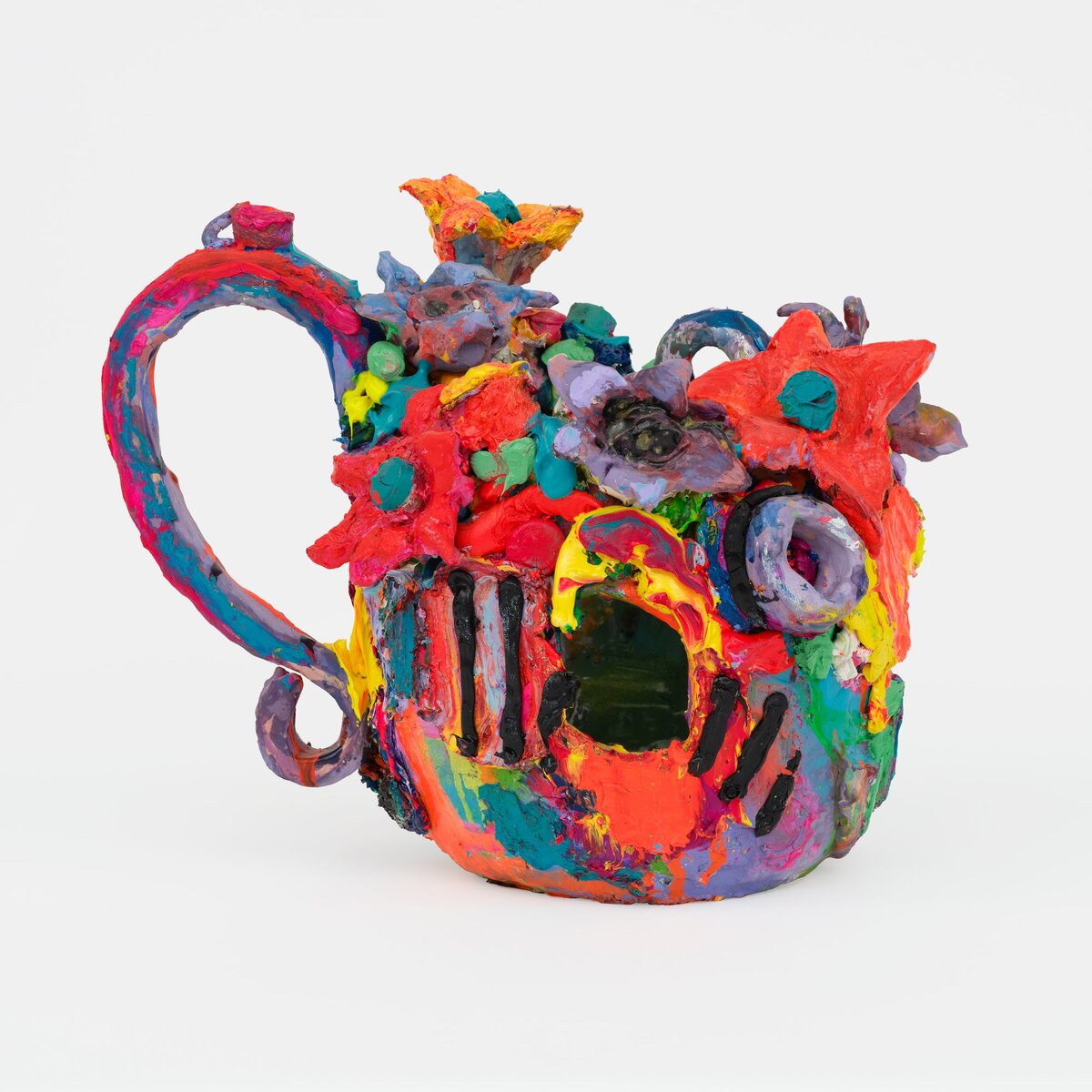 Dena Novak (American, b. 1968), Tea Pot, 2024, oil on ceramic
Dena Novak (American, b. 1968), Tea Pot, 2024, oil on ceramic
The inspiration behind these works are manifold as they contain allusions to Art History, relate to Novak’s identity as a neurodivergent artist with Autism and Ehlers-Danlos Syndrome, her interest in feminist activism, and references to her direct surroundings. Novak’s Boxing with Pollock #22 (2024) is a a great example in which she applies the drip gestures and aggressive overlays of paint popularized by the Abstract Expressionist Jackson Pollock, but through the three-dimensionality of a ceramic-in-the-round. Quantum Mechanics of My Neurodiversity (2024) presents itself almost as a visual mapping of the artist’s neurodivergence and how this informs who she is as a person with the perfectly-fitted sections of an abstract mass containing countless permutations of color, patterns, and shapes – an effective show of the multifarious parts comprising one’s identity, the metaphorical nuts-and-bolts. SHRINE made the prudent decision to exhibit both the paintings and ceramics together as they truly are operating on the same level with their more-than-overtly, ostentatious, texturally-rich pageantry of expressive paints and glazes. If an artwork could speak, then these mediums would be in the liveliest of lively conversations with one another. Give Novak a blank canvas or a pile of clay, and she will perform magic!
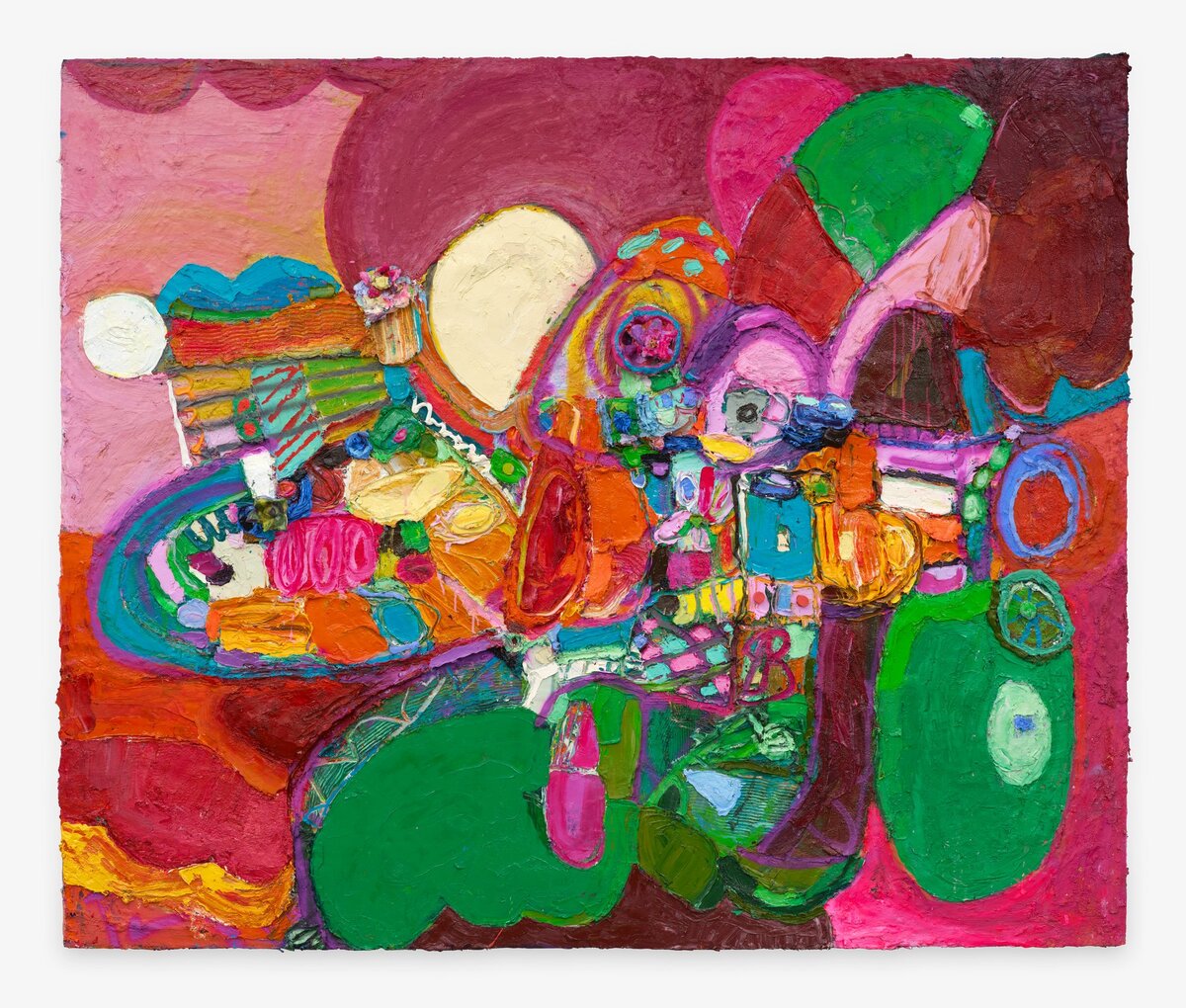 Dena Novak (American, b. 1968), Quantum Mechanics of My Neurodiversity, 2024, oil, ceramic, crystal and cold wax on wood panel.
Dena Novak (American, b. 1968), Quantum Mechanics of My Neurodiversity, 2024, oil, ceramic, crystal and cold wax on wood panel.
I absolutely cannot neglect to mention that Novak’s art is further enriched by the impressive educational background she has amassed over the years by way of the Art Institute of Chicago, Colorado College (BFA), Tufts University (MA in Teaching and Art Education), School of the Museum of Fine Arts, Boston, and now, Otis College of Art and Design in Los Angeles (to be completed this year for an MFA).
Beverly Fishman: Geometries of Hope (and Fear) at Miles McEnery Gallery, Chelsea (May 8 – June 21, 2025)
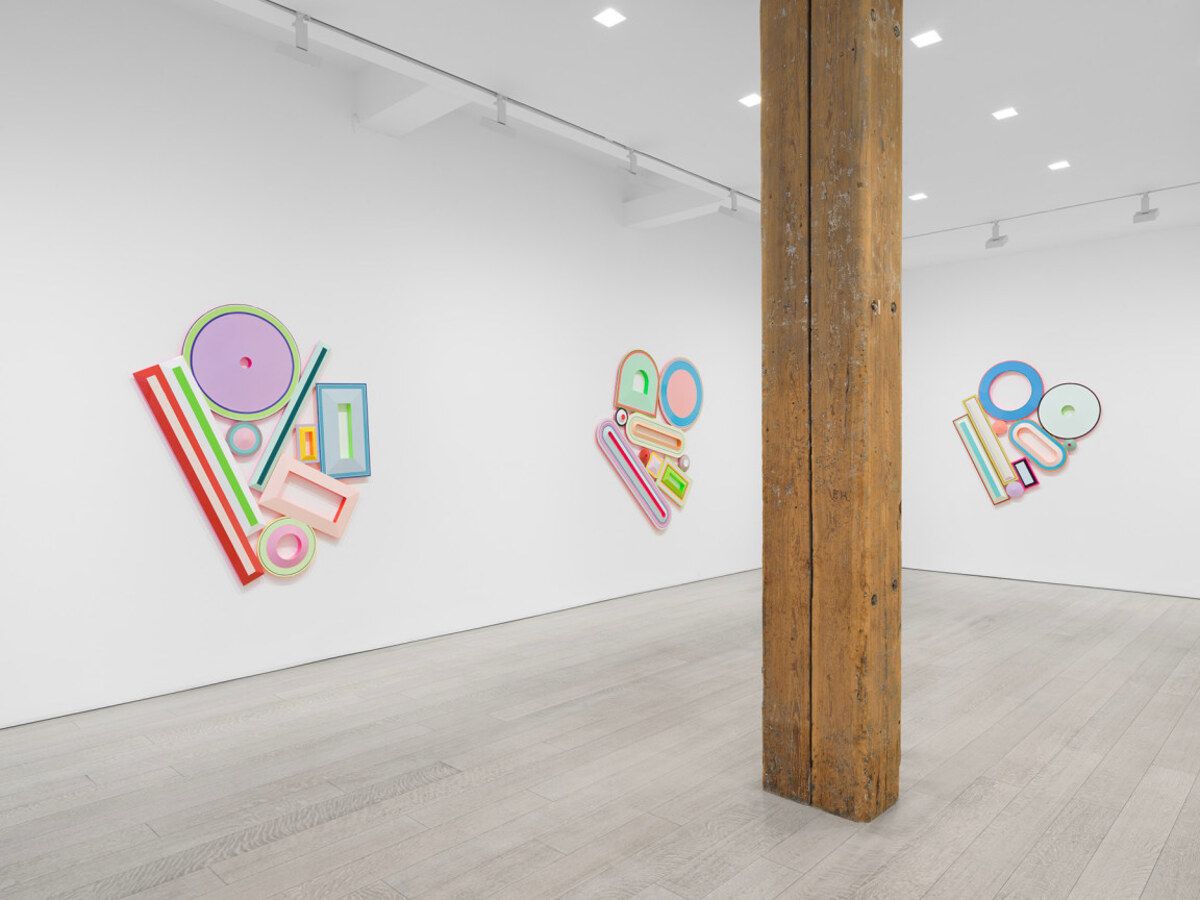 Installation view of Beverly Fishman: Geometries of Hope (and Fear) at Miles McEnery Gallery, Chelsea
Installation view of Beverly Fishman: Geometries of Hope (and Fear) at Miles McEnery Gallery, Chelsea
Beverly Fishman (American, b. 1955) is an excellent example of an artist who makes a convincing argument for abstract art’s capacity to voice political critique. Geometries of Hope (and Fear) is a continuation of Fishman’s personal and artistic investment in using abstraction as a vehicle for exploring representations of the body in relation to the pharmaceutical industry and medical (in)justice. As one of the leading abstract artists in America, Fishman has come to develop a style that is intrinsic to her practice: combined geometric sculptural relief paintings that project from the walls and are comprised of intermixing convex and concave forms rendered in a luminous palette of fluorescent and neon colors within a systematized structure. Her latest exhibition with Miles McEnery deliberately breaks with prior self-convention in lieu of a more fluid, freeform redefinition of her style that is visually arresting.
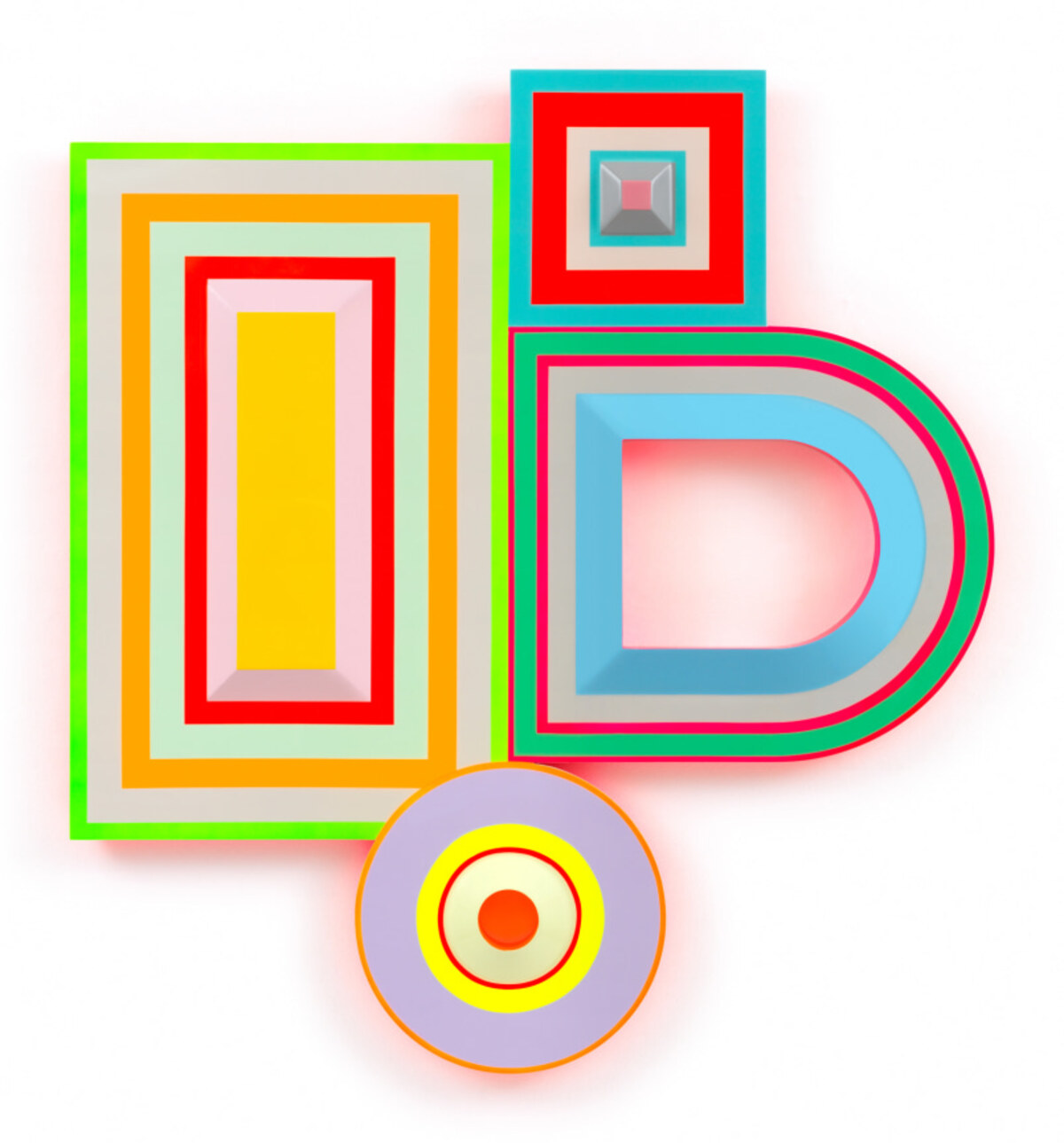 Beverly Fishman (American, b. 1955), Polypharmacy: Confidence, Energy, Joy, Liberation, 2024, urethane paint on wood.
Beverly Fishman (American, b. 1955), Polypharmacy: Confidence, Energy, Joy, Liberation, 2024, urethane paint on wood.
Forms recalling the shapes of over-the-counter pills and prescription tablets are juxtaposed with a series of “D” shaped figures. This latter detail immediately stood out to me as it made me think about the importance of Vitamin D in maintaining a robust, healthy body. Perhaps the “D” motif – which is shown either backwards or facing the correct way – is intended as a literal building block that keeps Fishman’s compositions in check. The remaining circular, rectangular, and ovoid shapes within these works glow in vibrant hues that seem to thrive off of their conjoined bejeweled surfaces. Even for someone who is not versed in the visual language of Fishman, it comes across quite legibly that the assortment of figures practically mimics every conceivable kind of medication for physical, mental, and emotional health needs.
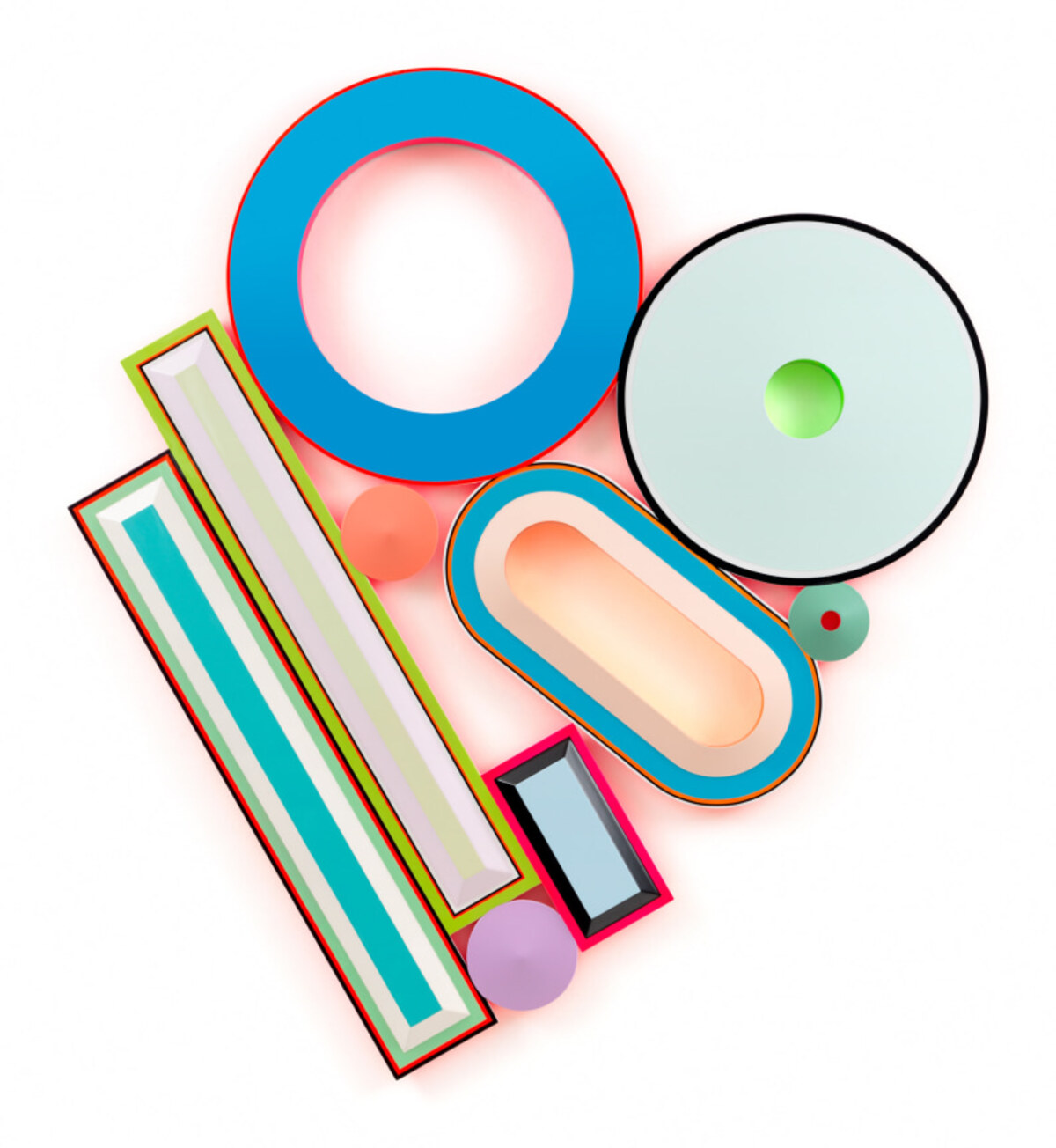 Beverly Fishman (American, b. 1955), Equilibrium (B.O.C.C.), 2025, urethane paint on wood.
Beverly Fishman (American, b. 1955), Equilibrium (B.O.C.C.), 2025, urethane paint on wood.
With access to proper healthcare a pressing issue for millions of Americans, there is another side to this in which the medley of pills and tablets implies the overwhelming reliance one can have on many different kinds of medications (having had a relative who dealt with autoimmune diseases and mental health challenges, this is familiar territory for me). And in another lens, the dangers of medicinal addictions has already been a spiraling problem across hundreds of communities. But the title for this exhibition compels one to pause seeing that it is the “Geometries of Hope (and Fear)”, which speaks to the duality of medications. The “hope” being proper access and effectiveness of such medical usage, while the “fear” deals with lack of access and dangerous side effects.
Fishman’s art is fueled by an activist mindset, but she wisely uses her works as a platform to initiate an engrossing dialogue that does not become over-explanatory (for that would defeat the purpose of abstract art in the first place). From a formalist perspective, Fishman’s compositions can be compared with the shaped canvases of Frank Stella, but she takes this many steps further by infusing a cogent political narrative that can be grasped by those who are attuned to such matters (unless you have been living an ascetic life, body politics is one of the most pressing issues in contemporary American discourse). Fishman’s art is the stark realization that pills have become a recognizable, virtually inescapable motif for our times – from commercial advertisements, to the pharamcy or supermarket shelves, and now, the contemporary art gallery.
NANNYCAM at FRISSON, Lower East Side (May 29 – June 21, 2025)
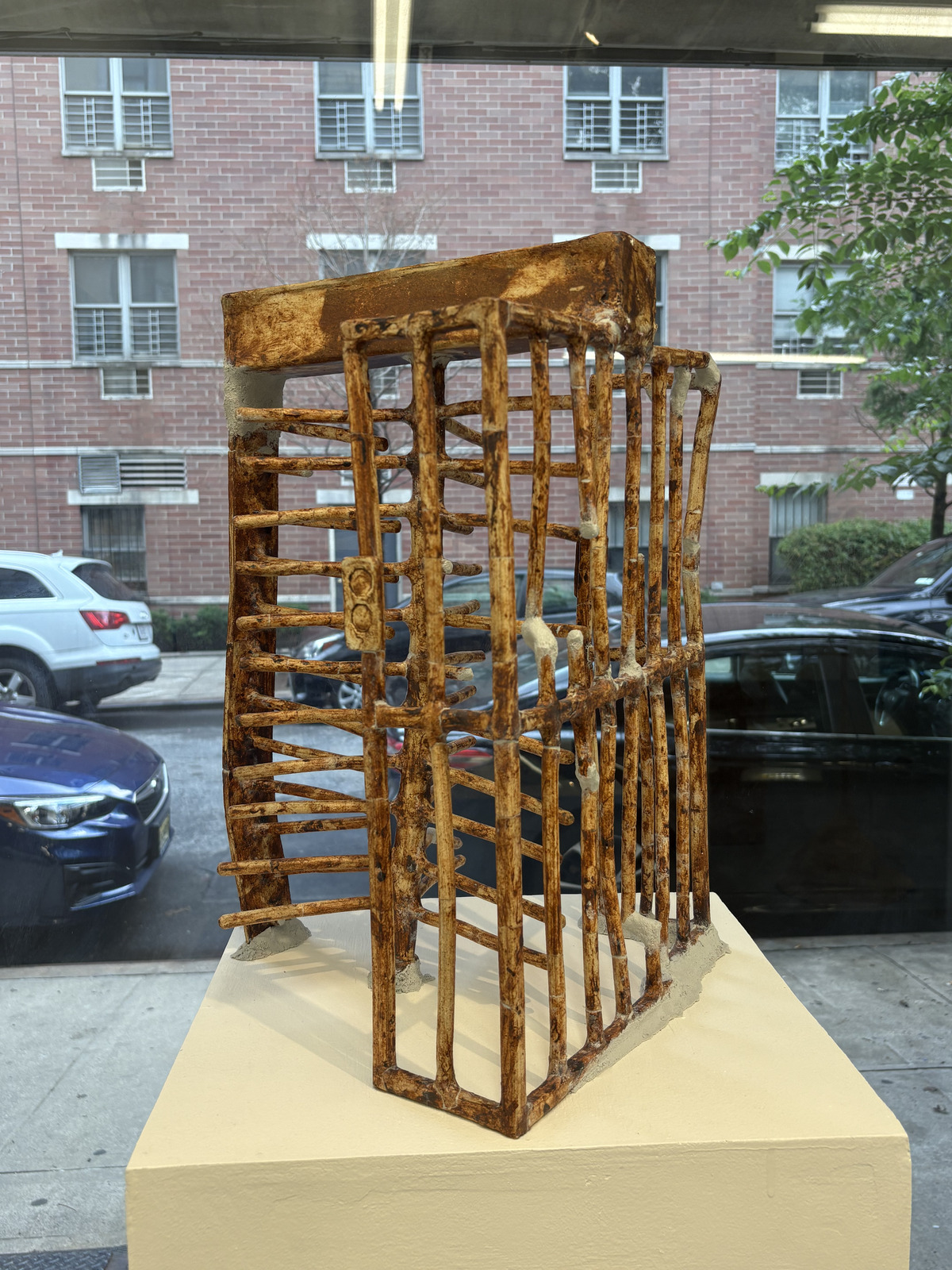 Katie Chin, Mind the Gap 02, 2024, glazed ceramic.
Katie Chin, Mind the Gap 02, 2024, glazed ceramic.
The panopticon, a type of circular prison in which prisoners can be viewed on a 24/7 basis, gave rise to a complimentary theoretical idea that has examined the role of surveillance in society, which has influenced generations of artists over the last few centuries. FRISSON, located in the nexus of the Lower East Side’s edgy art scene, applies the ideas of the panopticon and surveillance more broadly into the realities of today’s – to borrow from the philosopher Marshall McLuhan – global village.
Katie Chin’s ceramic sculptures of the curved arm turnstiles found at select subway stations presents these barriers in a ruinous state with faux-rust, bent bars, and missing sections. By isolating the turnstile from its usual context, this kind of divider really resembles a horrific Medieval torture device (coincidentally, Chin told me a friend of a friend was once trapped in the middle of one of these for almost a half hour). Considering the city government’s strict laws on transportation fares, Chin is denoting that these turnstiles are demonstrative of an oppressive power system that relies on hostile design to enforce such barriers in which access to transportation is not a democratized service. Chin also goes for metaphor with a pile of sand covering old, disused keyboards and a beekeeping box with fake honeycombs inside as a commentary on the collective cyclical monotony of labor that recalls Edward Norton’s famous line from Fight Club: “Everything is a copy of a copy of a copy.”
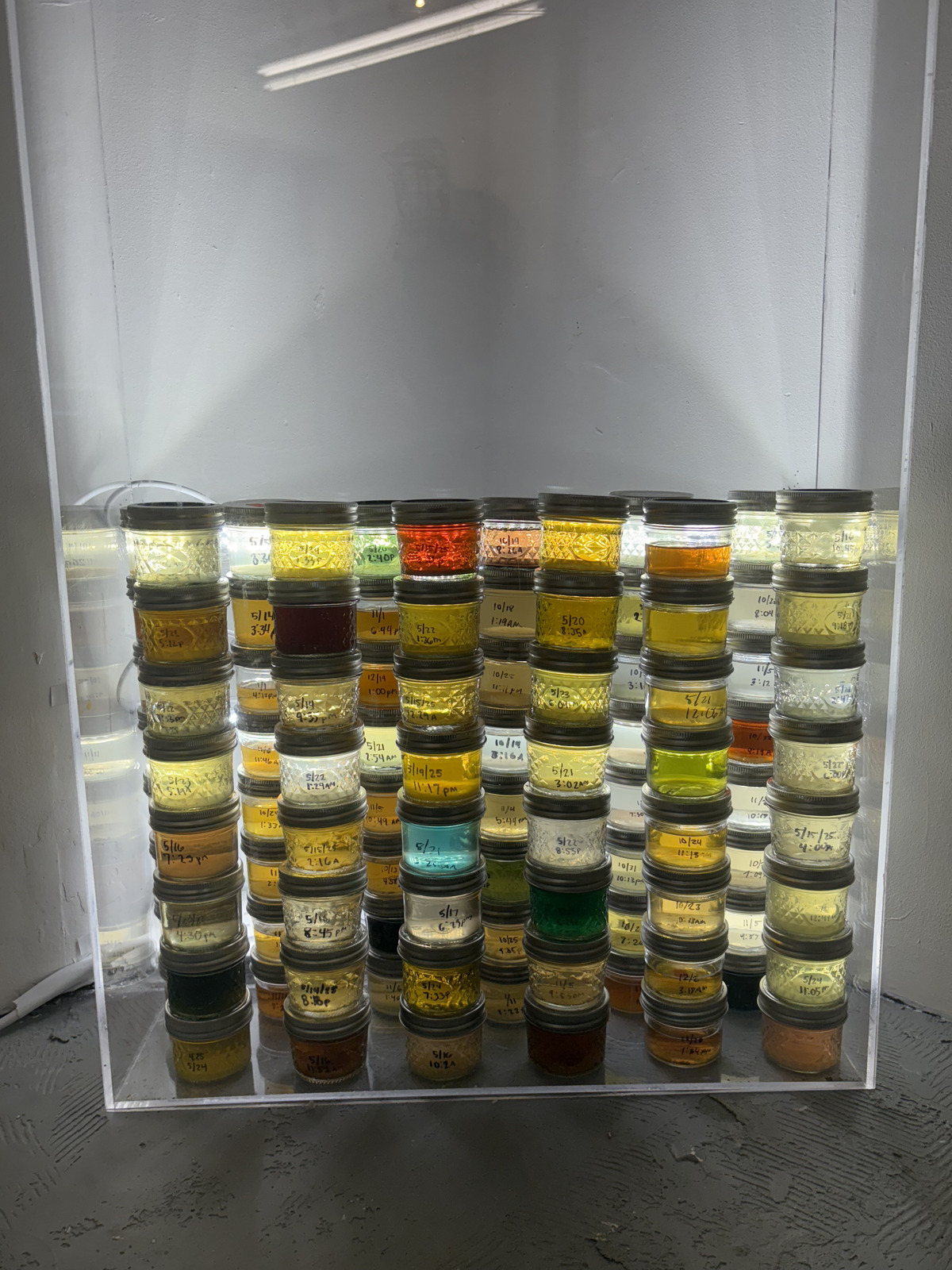 SRGE_Lindsay, Compulsive Self Surveillance, 2025, 96 jars of urine collected from November – May into 12 totems of 8 jars each, 20 sheets of handmade blood-infused paper.
SRGE_Lindsay, Compulsive Self Surveillance, 2025, 96 jars of urine collected from November – May into 12 totems of 8 jars each, 20 sheets of handmade blood-infused paper.
SRGE_Lindsay assumes the role of a cyborg in which she relies upon her body, physiochemical experimentation, and handwritten documentation as a form of resistance to technological surveillance. She displayed 96 jars of her urine that are of varying shades as an alchemical experiment in controlling how her body could produce different pigments (i.e. green pee, blue pee, etc.) through the consumption of different vitamins, drinking only whiskey instead of water for two days, or letting the urine oxidize for a set period when exposed to the air, etc. A wall of crumpled notes that had originally been covered in water and hemorrhoidal blood provide vivid, real-time descriptions of her progress. Though one could draw a comparison to Piero Manzoni’s Artist’s Shit (literally canned feces) from 1961, SRGE_Lindsay proves that the body is its own machine that can be controlled through sheer willpower and physical effort. And as she showcased here, your orifices could even produce something beautiful.
Jared Friedman’s paintings of empty boxes and packages are an alternative perspective on consumerism. Rather than centralizing our focus on the commercial desirables, he chooses to paint the containers in which they are packaged, shipped, and eventually discarded. Until this point, I do not recall a moment when an artist engaged with such a subject so poignantly and so succinctly. The additive display of containers in these images are suggestive of the amount of space the aforementioned objects assume in our surroundings, not just through the active purchasing of products by consumers, but the wasteful allocation of space with disproportionately sized boxes for smaller-than-small items designated by corporations (Jeff Bezos’s Amazon is a huge offender).
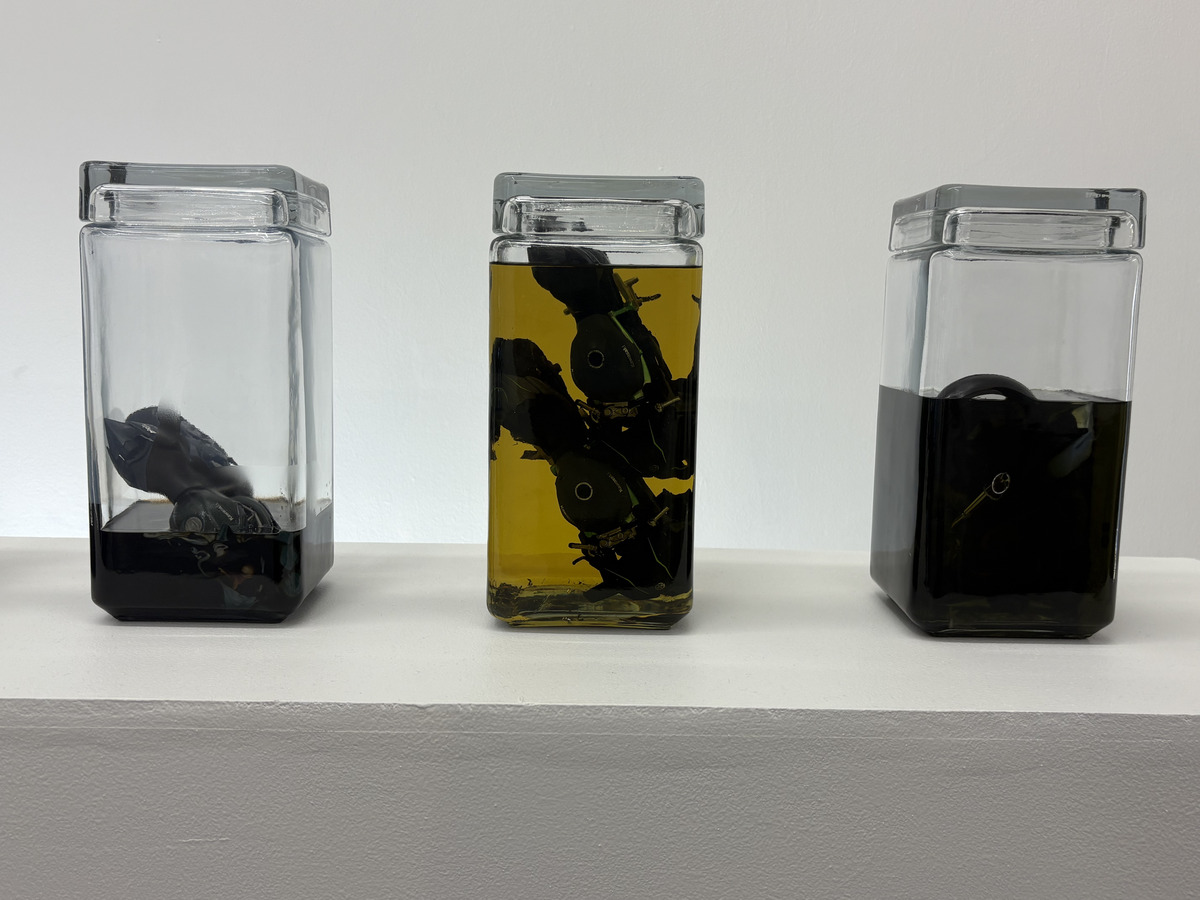 Jin Mateo Kim, Hate and Glory, 2023 – ongoing, petroleum-based plastic cast model of Kawasaki H2R dissolving in aetheroleum (detail).
Jin Mateo Kim, Hate and Glory, 2023 – ongoing, petroleum-based plastic cast model of Kawasaki H2R dissolving in aetheroleum (detail).
Jin Mateo Kim scrutinizes the overwhelming physical and kinetic dominance exerted by high-powered machines. Hate and Glory is a conceptual, time-based sculpture in which a plastic model cast of the Kawasaki H2R motorcycle slowly dissolves in aetheroleum, a corrosive chemical liquid. The Kawasaki H2R, which is regarded as the fastest and most powerful motorcycle in the world, is instead shown in a state of prolonged decay (this series began in 2023) as the motorcycle dematerializes into a murky liquid mass, and thus proving the fallibility of purportedly indestructible machines.
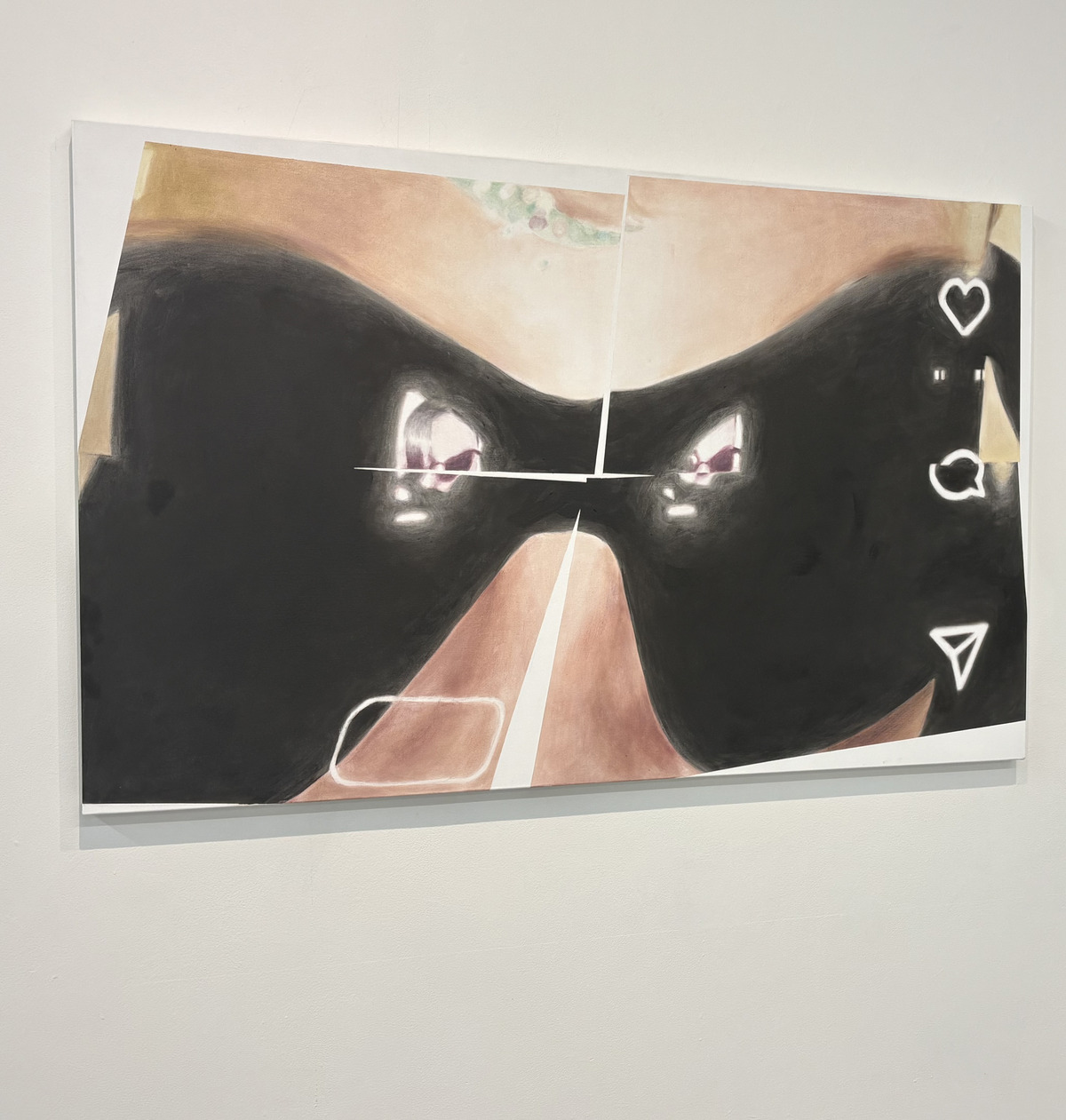 Silvia Muleo, Black Mirror, 2025, oil on canvas.
Silvia Muleo, Black Mirror, 2025, oil on canvas.
Silvia Muleo’s paintings and video work reduce the digital screen to a formal study of how these surfaces affect our perceptions of the physical and digital worlds, with questions of what is genuine and what is simulacra. Black Mirror, which automatically evokes the name of the dark science fiction series on Netflix, is a zoomed-in painterly recreation of an Instagram reel paused on an ambiguous symmetrical figure that could be a pair of blackened reflective sunglasses over a face while the “Heart”, “Share”, and “Comment” icons from the social media app are on the right. In one sense figurative, and in another abstracted, Muleo’s painting challenges us to give our undivided attention to a frozen, almost context-less image that we would normally give probably no more than a few seconds of attention before proceeding with our Instagram or TikTok (doom)scrollings.
FRISSON’s motley grouping of artists each proffer an individualized yet collectively cohesive commentary on the myriad ways that surveillance filters into our lives along with prescriptive ideas that suggest another (better) reality.
